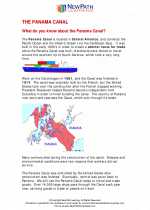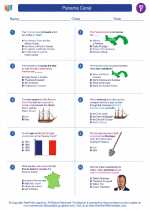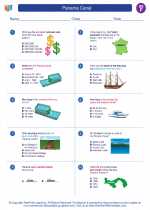Colonial America
- Q: What were the major reasons for European exploration and colonization of the Americas?
- Q: What were the key features of the early English colonies in America?
A: Europeans explored and colonized the Americas for reasons such as economic gain, the spread of Christianity, and the search for new trade routes to Asia.
A: The early English colonies in America were characterized by diverse economies, including agriculture, trade, and commerce. The colonies also developed distinct political and social structures.
American Revolution
- Q: What were the causes of the American Revolution?
- Q: What were the main events and outcomes of the American Revolution?
A: The causes of the American Revolution included issues such as taxation without representation, restrictions on trade, and the desire for greater political autonomy.
A: Key events of the American Revolution included the Boston Tea Party, the signing of the Declaration of Independence, and the Battle of Yorktown. The Revolution resulted in the establishment of the United States as an independent nation.
Westward Expansion
- Q: What factors contributed to westward expansion in the 19th century?
- Q: What were the consequences of westward expansion on Native American tribes and the environment?
A: Factors such as the desire for land, economic opportunities, and the ideology of Manifest Destiny drove westward expansion in the 19th century.
A: Westward expansion led to the displacement and mistreatment of Native American tribes, as well as significant environmental changes due to increased settlement and resource exploitation.
Civil War and Reconstruction
- Q: What were the main causes of the Civil War?
- Q: What were the goals and challenges of Reconstruction after the Civil War?
A: The main causes of the Civil War included issues related to slavery, states' rights, and differing economic and social systems in the North and South.
A: The goals of Reconstruction included reuniting the country, securing rights for newly freed slaves, and rebuilding the South. However, it faced challenges such as resistance from former Confederate states and the rise of segregation.
Industrialization and Progressive Era
- Q: How did industrialization transform American society and the economy?
- Q: What were the main goals of the Progressive Era reform movements?
A: Industrialization led to urbanization, the rise of big business, and significant technological advancements that reshaped the American economy and way of life.
A: The Progressive Era aimed to address issues such as political corruption, social inequality, and poor working conditions through reforms in government, business, and society.
World War I and Interwar Period
- Q: What were the causes and consequences of the United States' entry into World War I?
- Q: What were the major social and cultural changes in the United States during the interwar period?
A: The causes of U.S. entry into World War I included unrestricted submarine warfare by Germany and the interception of the Zimmermann Telegram. The consequences included the Treaty of Versailles and a shift in U.S. foreign policy.
A: The interwar period saw significant cultural shifts, including the Roaring Twenties, the Harlem Renaissance, and the rise of consumer culture, as well as social changes related to women's rights and immigration.
[American History] Related Worksheets and Study Guides:
.◂Social Studies Worksheets and Study Guides Sixth Grade. Panama Canal

 Worksheet/Answer key
Worksheet/Answer key
 Worksheet/Answer key
Worksheet/Answer key
 Worksheet/Answer key
Worksheet/Answer key
